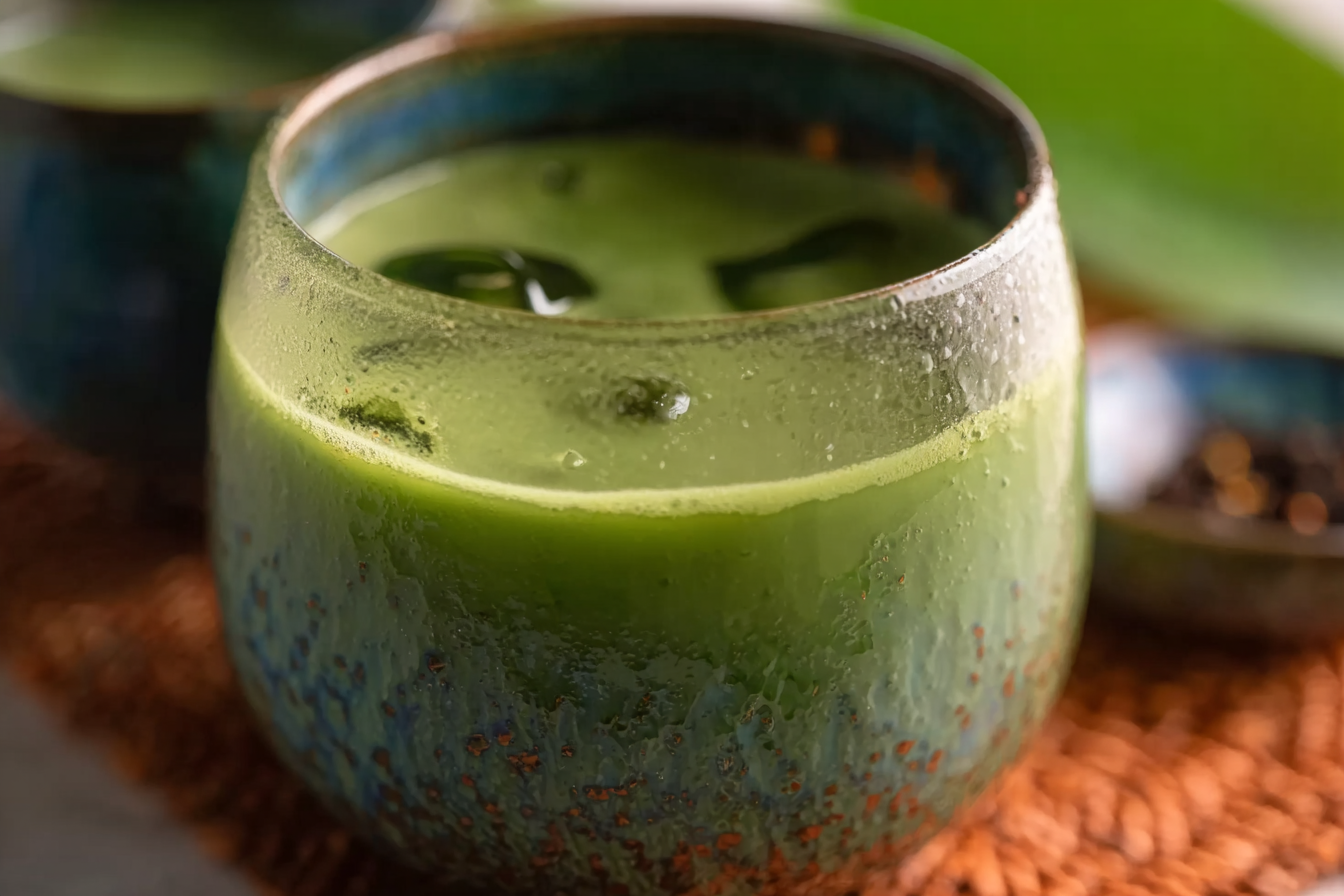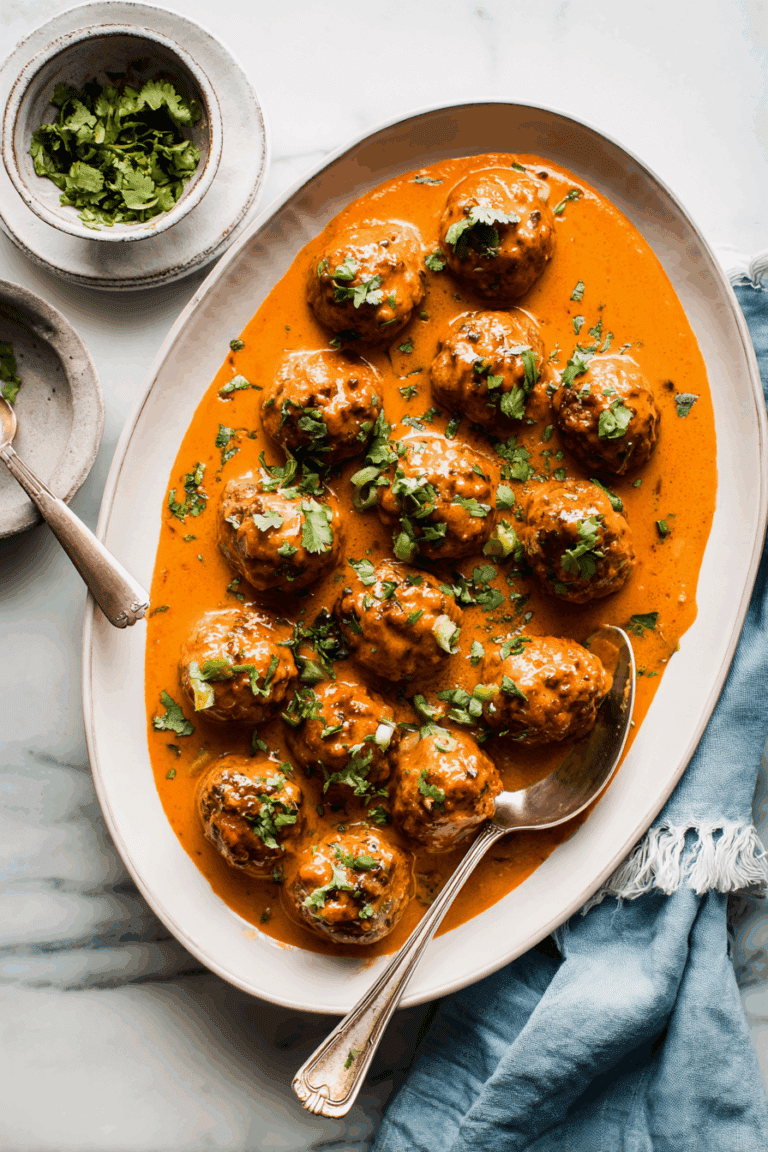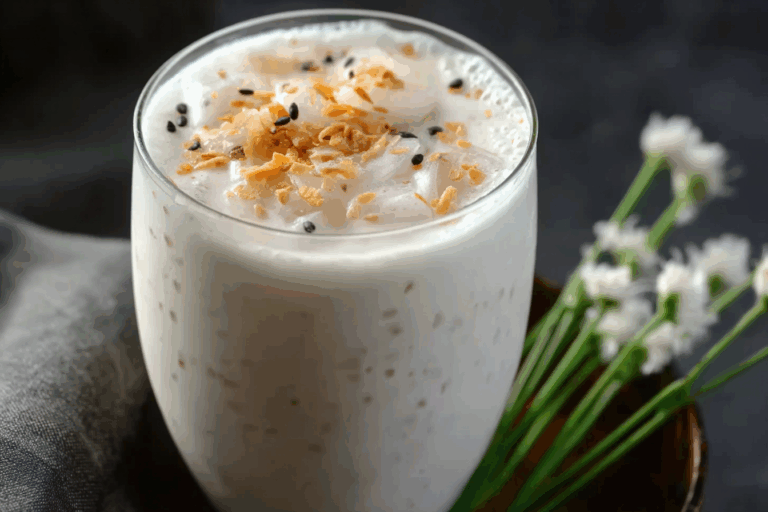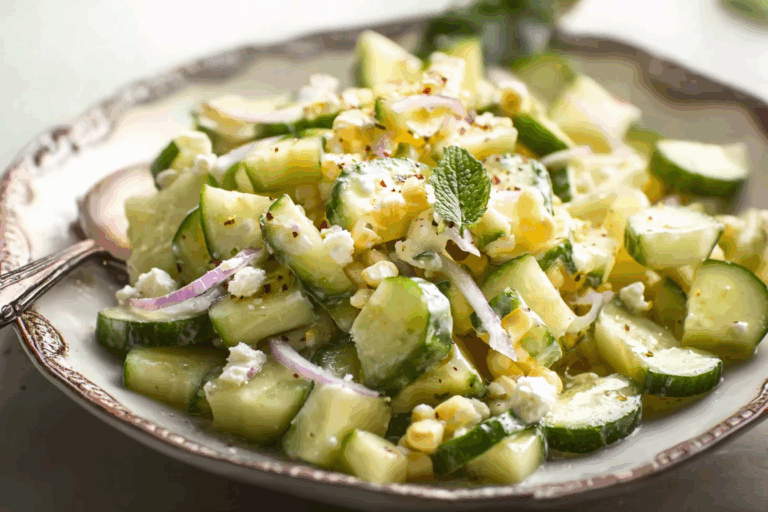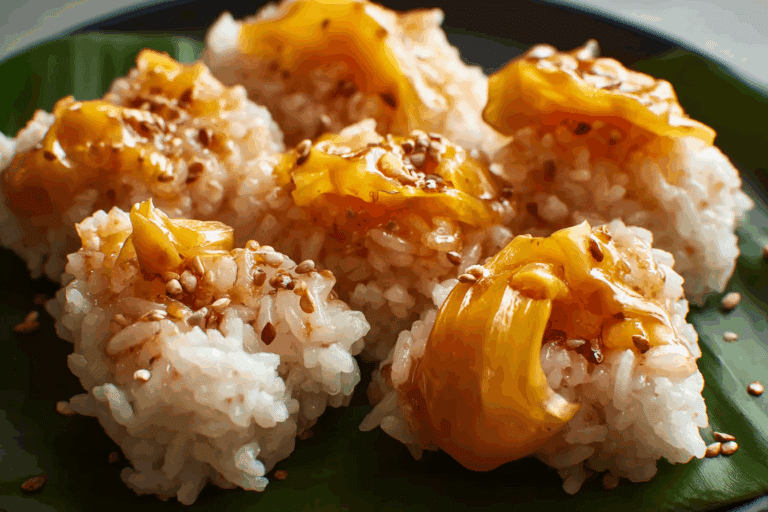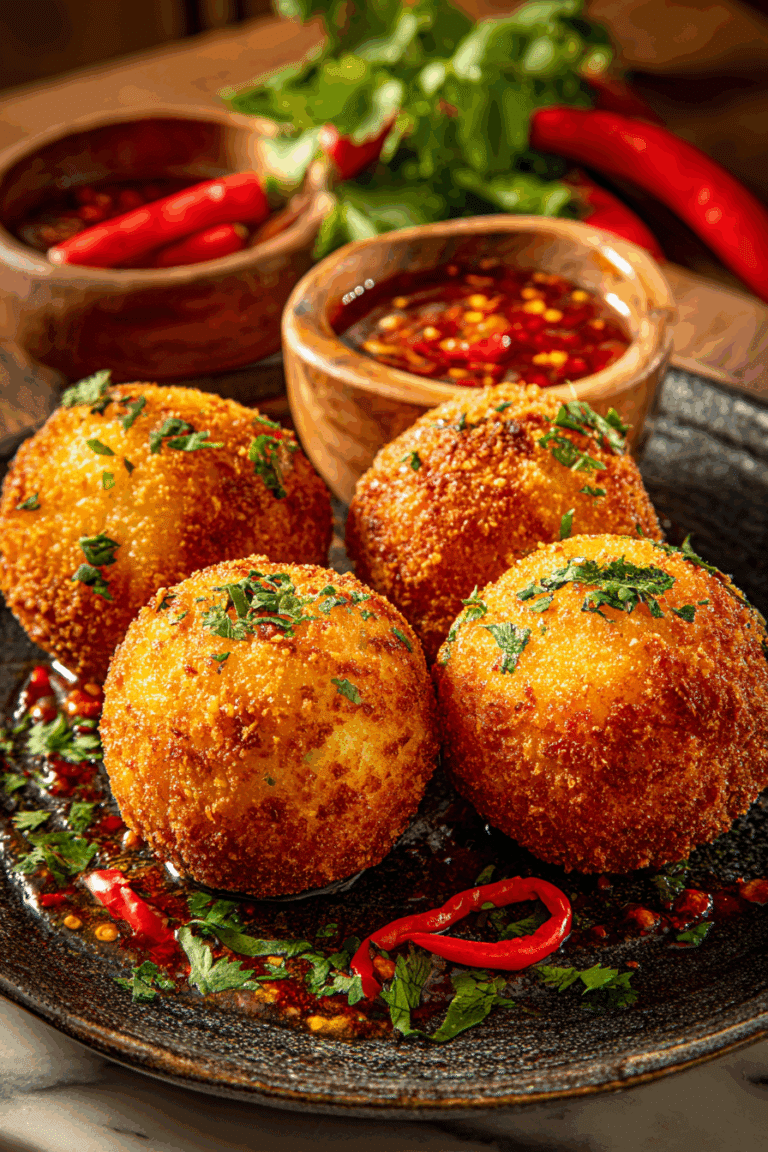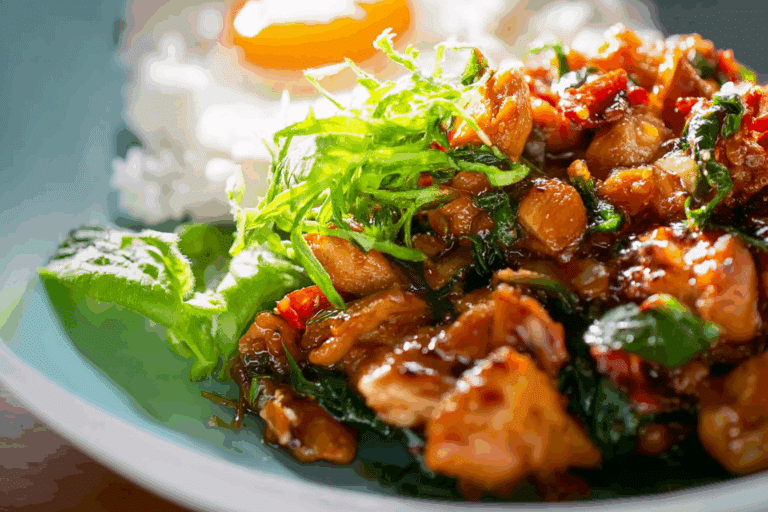Thai Green Tea: How to Make the Most Delicious Drink at Home
Thai green tea isn’t just a refreshing drink it’s a story steeped in culture, tradition, and comfort. At Just Thai Recipes, we take pride in delivering not just recipes but the authentic taste and essence of Thai cuisine. That’s what inspired Lina, the creator behind the site, to start this journey. As she shares on our About page, her passion began with a mission to bring Thailand’s bold, vibrant flavors to food lovers around the world. Thai green tea embodies that mission perfectly—it’s bold, earthy, creamy, and layered with personality.
Whether you’ve sipped it in a bustling Thai café or are curious about its rising popularity in America, this guide will walk you through everything: from how it’s made to the benefits it offers and how you can make it at home. We’ll even clear up the confusion between Thai tea vs Thai green tea, dive into its caffeine content, and explore popular variations like Thai green tea smoothie and Thai green tea latte.
Let’s dig in.
Table of Contents
Table of Contents
Understanding Thai Green Tea and Its Cultural Roots
What is Thai Green Tea?
Thai green tea is a beloved Thai beverage made from a unique mix of green tea (often matcha), black tea, sweetened condensed milk, and aromatic spices like cloves and star anise. Served chilled over ice or hot, it combines creaminess, subtle sweetness, and an earthy aroma that sets it apart from your typical cup of green tea.
Unlike basic green tea, Thai green tea is about layering flavors. You’ll get the natural bitterness of matcha softened by the richness of milk, balanced with sweetness and gentle spices that give it depth. It’s often used as a base in Thai cafés and boba shops across Southeast Asia—and now, increasingly in the US.
Thai green tea recipe lovers describe it as a cozy, nostalgic drink that tastes like something between a latte and a dessert.
History of Thai Green Tea in Thai Cuisine
While tea has ancient roots in Asia, Thai tea is a relatively modern evolution. Its popularity surged in Thailand as locals began blending imported green tea powders with local ingredients to match Thai flavor preferences—rich, creamy, and bold.
Street vendors and Thai cafés led the charge, customizing it to be sweeter and cooler (perfect for Thailand’s climate). It quickly became a staple alongside spicy dishes, serving as the creamy contrast to dishes like green curry and papaya salad.
This drink was eventually adapted for modern café culture, resulting in the trendy drinks we see today—layered matcha lattes, vibrant green boba teas, and smooth smoothies—all influenced by the original Thai green tea mix.
Print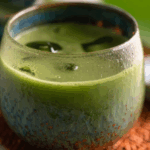
Thai Green Tea
- Prep Time: 10 minutes
- Cook Time: 5 minutes
- Total Time: 1 hour
- Yield: 2 servings 1x
- Category: Beverages
- Method: Stovetop
- Cuisine: Thai
- Diet: Vegetarian
Description
This refreshing Thai Green Tea combines aromatic spices, rich black tea, creamy condensed milk, and vibrant matcha for a layered iced drink that’s both comforting and energizing.
Ingredients
- 2 star anise pods
- 5 cloves
- 1 cup milk
- 2 tablespoons black tea leaves
- 1 ½ tablespoons sweetened condensed milk
- 1 pinch kosher salt
- ¾ cup hot water
- 2 teaspoons matcha
- Ice, as needed
Instructions
- In a small, dry skillet over medium-low heat, toast the star anise and cloves for a few minutes until fragrant. Remove and let cool.
- Coarsely crush the toasted spices with a mallet or rolling pin.
- Heat the milk until steaming, then add the black tea leaves and crushed spices. Let steep for 45 minutes.
- Strain the tea mixture, pressing on the solids to extract liquid, then discard solids. Stir in sweetened condensed milk and kosher salt until combined. Chill in the refrigerator.
- In the meantime, whisk matcha into the hot water until smooth and frothy. Set aside.
- Fill a serving glass with ice, pour in the chilled Thai tea, then gently top with the prepared matcha. Stir before serving.
Notes
- For a vegan version, substitute dairy milk with coconut or almond milk and use sweetened condensed coconut milk.
- You can adjust the sweetness by adding more or less condensed milk to taste.
- Use ceremonial grade matcha for a brighter color and smoother flavor.
Nutrition
- Serving Size: 1 glass
- Calories: 140
- Sugar: 18g
- Sodium: 120mg
- Fat: 3g
- Saturated Fat: 2g
- Unsaturated Fat: 0.5g
- Trans Fat: 0g
- Carbohydrates: 25g
- Fiber: 0g
- Protein: 3g
- Cholesterol: 10mg
Keywords: Thai green tea, iced Thai tea, matcha Thai tea, Thai tea recipe, Thai drinks
Looking for inspiration? Try this spicy-sweet Corn and Cucumber Salad—a perfect pairing with Thai green tea.
Thai Green Tea Ingredients and Flavors
Key Ingredients for Authentic Green Tea
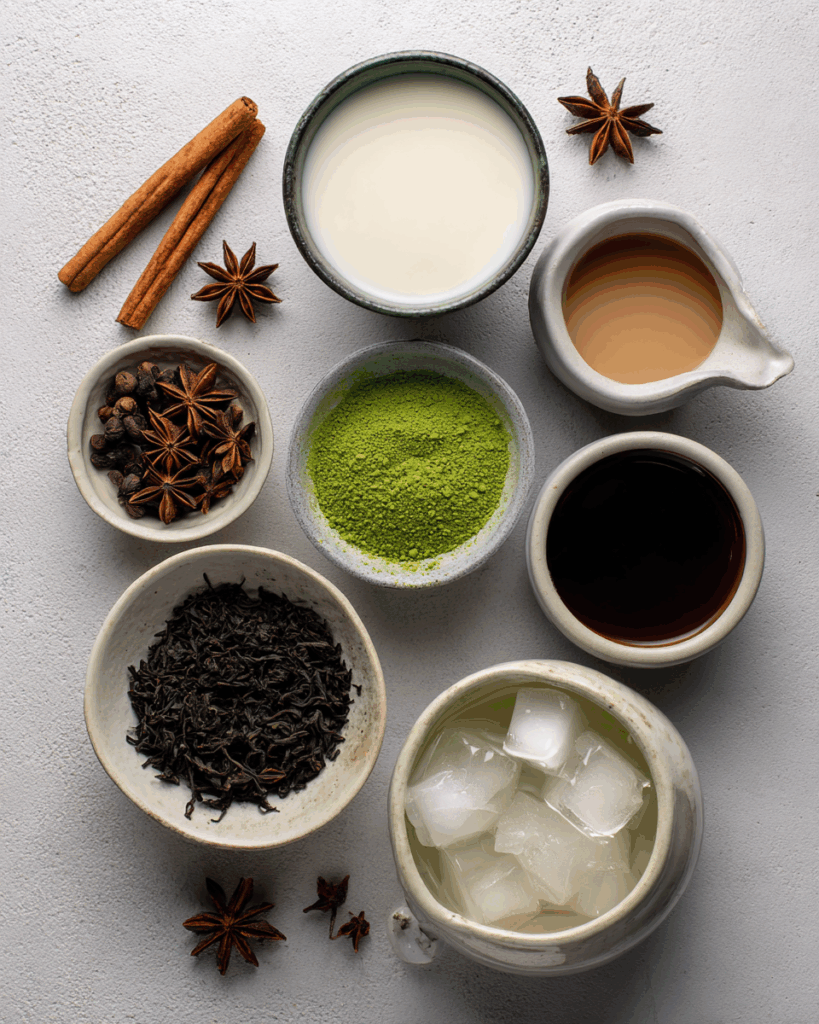
The secret behind an unforgettable cup of Thai green tea lies in its carefully chosen ingredients. This isn’t your average green tea—it’s a symphony of flavors crafted from traditional Thai staples and tea-making techniques. Here’s what goes into making the real deal:
- 2 Star Anise Pods: Adds a warm, licorice-like aroma.
- 5 Cloves: Infuses a slightly sweet, spicy note that deepens the flavor profile.
- 1 Cup Milk: Creates the signature creamy texture. Whole milk works best, but you can swap for coconut milk for a dairy-free version.
- 2 Tablespoons Black Tea Leaves: Provides a subtle base that enhances matcha’s earthiness.
- 1 ½ Tablespoons Sweetened Condensed Milk: The sweet touch that balances out the earthy tea and spices.
- 1 Pinch Kosher Salt: Enhances all other flavors and prevents the drink from tasting too sweet.
- ¾ Cup Hot Water: For brewing tea and activating the matcha.
- 2 Teaspoons Matcha: The star of the show, offering vibrant green color and antioxidant richness.
- Ice: Essential for serving it Thai-style, iced and refreshing.
This list mirrors traditional Thai techniques but also leaves room for creativity. For example, some street vendors add pandan leaves for a grassy vanilla undertone or swap condensed milk for evaporated milk to tone down sweetness.
Discover great ideas like our refreshing Pad Thai Salad that pairs wonderfully with Thai green tea.
Flavor Profile: Sweet, Earthy, and Creamy
If you’re wondering why people obsess over Thai green tea, the answer lies in its unique flavor layering:
| Flavor Note | Description |
|---|---|
| Earthy | From the matcha and black tea base |
| Creamy | Thanks to sweetened condensed milk and milk |
| Spicy Aromatic | Star anise and cloves bring gentle warmth |
| Sweet-Salty | Balanced sweetness with a hint of saltiness |
It’s a drink that appeals to multiple senses: the vibrant green color draws you in, the smell of spices warms you, and the first sip delivers a creamy yet refreshing experience. This combination makes it stand out even among other Thai drinks like Thai iced tea.
Pro Tip for Home Cooks
When sourcing ingredients, especially Thai green tea leaves or matcha, always choose brands with minimal additives. Avoid mixes with artificial green coloring, which are sometimes found in low-quality products.
Thai Green Tea vs. Thai Tea – What’s the Difference?
How Does Thai Green Tea Differ from Thai Tea?
At first glance, Thai green tea and Thai tea may look similar in presentation—both served over ice with a creamy, layered appearance—but their flavors and ingredients tell a very different story.
Thai Tea is made with:
- Strong brewed black tea
- Spices like star anise and tamarind
- Bright orange coloring (often from food dye)
- Sweetened condensed milk and sugar
Meanwhile, Thai Green Tea swaps black tea for green tea or matcha, delivering a fresher, grassy, and slightly bitter undertone. Its color, a vibrant green, is all-natural when using high-quality matcha.
If you’re still curious about their differences, Thai Caliente has an excellent guide on how Thai green tea compares to Thai iced tea and which one to choose based on your taste preferences.
Thai Green Tea vs. Matcha: Are They the Same?
It’s easy to confuse Thai green tea with a standard matcha latte, but they are quite different.
| Feature | Thai Green Tea | Matcha Latte |
|---|---|---|
| Tea Base | Green tea leaves + black tea | Pure matcha powder |
| Flavor | Creamy, spiced, slightly sweet | Grassy, earthy, lightly sweet |
| Preparation | Includes spices and milk layering | Pure matcha with milk |
| Cultural Origin | Thailand | Japan |
For a more in-depth exploration of making Thai-style green tea at home, check out Simply Suwanee’s recipe which balances creaminess with earthy matcha flavor.
Why the Confusion Between the Two?
The confusion often stems from café menus in the U.S., where matcha lattes are labeled as “Thai Green Tea.” However, true Thai green tea carries its distinct spiced signature and a sweeter profile.
If you want to experience an authentic version, Thai Foodie offers a fantastic tutorial on how to create the creamy, refreshing drink right at home.
Health Benefits of Thai Green Tea
Is Green Thai Tea Healthy?
When you sip a chilled glass of this drink, you’re enjoying more than just a sweet and creamy treat. Beneath its comforting flavor lies a world of health benefits derived primarily from its star ingredient: green tea. Green tea is celebrated globally for its rich content of antioxidants, particularly catechins and polyphenols, which combat free radicals in your body. This means every sip is contributing—albeit modestly—to your overall wellness.
One of the key components in green tea, epigallocatechin gallate (EGCG), is known for supporting metabolism and aiding in weight management. This isn’t to say the drink is a magic health potion; after all, the added sweetened condensed milk means it’s higher in calories and sugar compared to a plain green tea. But when enjoyed in moderation, it can be a satisfying and beneficial part of your diet.
There’s also the calming effect to consider. Green tea contains L-theanine, an amino acid that promotes relaxation without drowsiness. Combined with a moderate caffeine content, this makes it an ideal afternoon pick-me-up—helping you feel both alert and calm.
Benefits You Should Know
Rich in Antioxidants
Antioxidants in green tea help your body fight oxidative stress, which has been linked to chronic diseases like heart disease and certain cancers. A single serving of this drink may not provide as much as unsweetened green tea, but it still offers a healthy dose thanks to matcha or green tea leaves.
Supports Heart Health
Studies suggest that regular consumption of green tea can lower LDL cholesterol levels and improve arterial function. While this drink does contain added sugars, when made at home you can adjust the sweetness to suit your health needs.
Aids in Digestion
The warmth and spices in this drink, especially when consumed hot, may help with digestion. Star anise and cloves, two common ingredients, are known for their digestive properties in traditional medicine.
Mental Clarity and Focus
With its gentle caffeine boost, this drink can improve focus and concentration without the jitters associated with coffee. L-theanine balances caffeine’s stimulating effects, creating a state of alert calmness.
A Balanced Perspective
It’s important to enjoy this beverage as part of a balanced diet. While the antioxidants and amino acids are beneficial, the traditional recipe’s sweetened condensed milk can increase sugar intake if consumed daily. For those seeking a healthier alternative, you can substitute condensed milk with unsweetened coconut milk or almond milk and adjust sweetness using natural sweeteners like honey or stevia.
By tweaking the recipe, you can create a version that maintains its signature creamy texture and flavor while being lighter on calories. This makes it not only a delicious beverage but also one that aligns better with wellness goals.
Thai Tea and Caffeine Content
Does Thai Green Tea Contain Caffeine?
Yes, Thai green tea naturally contains caffeine because its base ingredient is green tea. Green tea leaves, whether in their loose-leaf form or finely ground as matcha, have inherent caffeine content. The amount of caffeine, however, can vary depending on the type of green tea used, the brewing time, and the serving size.
Typically, a serving of Thai green tea provides 30–50 milligrams of caffeine per 8-ounce glass, which is significantly less than coffee but more than many herbal teas. This moderate caffeine level makes it an excellent choice for those seeking a gentle energy lift without the jittery side effects that often accompany stronger caffeinated drinks.
The caffeine in Thai green tea acts as a mild stimulant, helping improve alertness and focus. Paired with L-theanine—a natural amino acid found in green tea—it promotes a sense of calm focus rather than the sharp spikes and crashes that coffee can induce. This combination is particularly beneficial for people looking to maintain productivity during mid-afternoon slumps.
Comparing Caffeine Levels: Thai Green Tea vs Coffee
To give you a clearer picture, here’s how Thai green tea stacks up against other popular caffeinated beverages:
| Beverage | Approximate Caffeine Content (8 oz) |
|---|---|
| Thai Green Tea | 30–50 mg |
| Regular Coffee | 95 mg |
| Black Tea | 40–70 mg |
| Matcha Latte | 60–70 mg |
| Herbal Tea (most) | 0 mg |
This comparison shows that Thai green tea is ideal if you want a balanced boost of energy. It won’t overload your system with caffeine, making it suitable even for people sensitive to higher doses.
When Should You Drink Thai Green Tea?
Because of its caffeine content, the best times to enjoy Thai green tea are:
- In the morning: For a gentle wake-up boost.
- Mid-afternoon: To combat energy dips without disturbing your sleep later.
- Before light exercise: Its mild caffeine can provide a little extra motivation.
However, it’s worth noting that consuming Thai green tea late in the evening may affect sensitive sleepers.
Decaf Thai Green Tea Options
If you’re sensitive to caffeine or want to enjoy Thai green tea in the evening, consider making a decaf version. You can:
- Use decaffeinated green tea leaves.
- Opt for caffeine-free matcha alternatives made from roasted barley or herbal blends.
- Skip the black tea leaves in the traditional recipe and rely solely on spices and milk for flavor.
These adjustments keep the experience of sipping a creamy, spiced Thai green tea while being gentler on your nervous system.
Step-by-Step Thai Green Tea Recipe
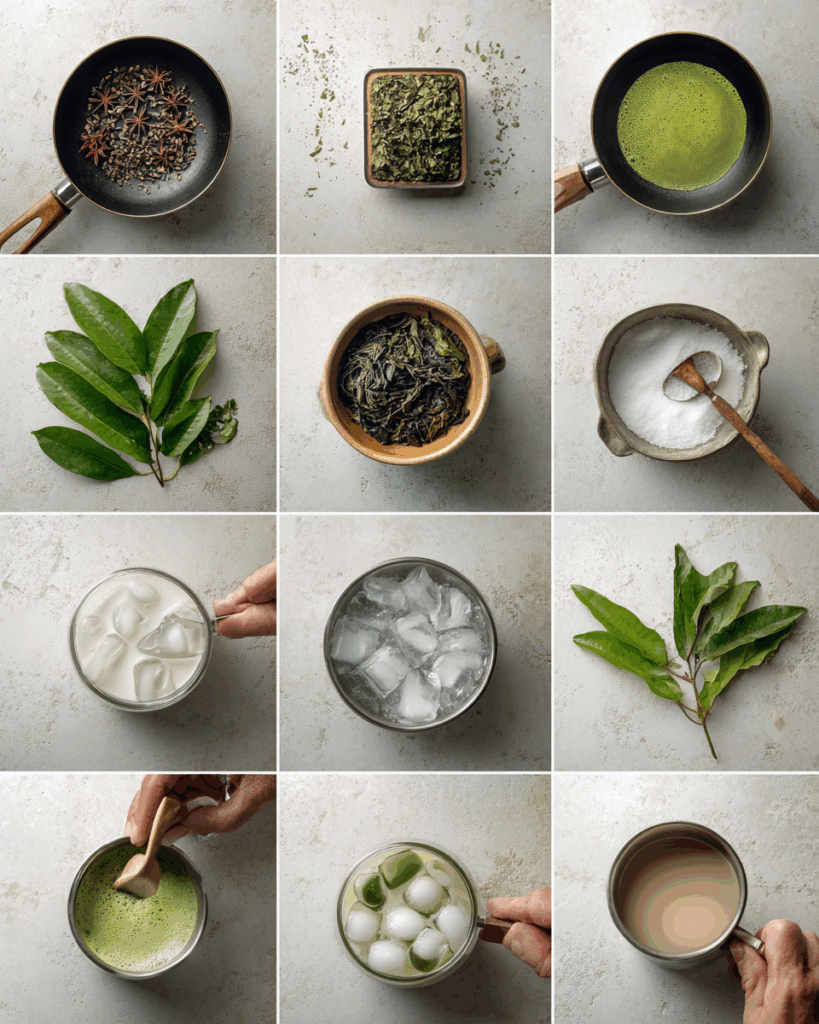
Preparing Spices for Your Tea Base
The magic of Thai green tea begins long before you take that first sip. It starts in your kitchen, as warm aromas of toasted spices fill the air. This preparation step is where Thai green tea takes a flavorful departure from plain green tea.
Begin by gathering 2 star anise pods and 5 cloves—the aromatic backbone of the drink. Place them in a small, dry skillet over medium-low heat. Toast the spices for about 2–3 minutes, stirring occasionally. You’ll notice their fragrance deepening and oils releasing, a sign they’re ready to infuse their essence into the tea.
Once toasted, remove them from the heat and let them cool slightly. Transfer the cooled spices to a mortar and pestle or place them in a zip-top bag and crush them gently with a rolling pin or mallet. The goal isn’t to pulverize them into powder but to break them enough so their flavors seep beautifully into the milk later.
Brewing the Tea
In a small saucepan or microwave-safe container, heat 1 cup of milk until steaming but not boiling. Add 2 tablespoons of black tea leaves and the crushed spices into the hot milk. Stir gently and let the mixture steep for 45 minutes. This slow infusion allows the milk to absorb the depth of the black tea’s tannins and the gentle heat of the spices.
After steeping, strain the mixture through a fine mesh sieve or cheesecloth into a clean container. Press down on the solids to extract every last drop of liquid gold. Discard the spent tea leaves and spices. Stir in 1 ½ tablespoons of sweetened condensed milk and 1 pinch of kosher salt while the mixture is still warm. Salt may seem unusual, but it enhances the flavors and balances the sweetness perfectly. Allow the mixture to cool slightly before transferring it to the fridge to chill.
Making the Matcha Layer
While the tea base chills, prepare the vibrant green layer. In a small bowl, whisk together 2 teaspoons of matcha with ¾ cup of hot water. For the smoothest result, use a traditional bamboo whisk or electric frother to create a light froth. This layer not only adds the iconic green hue but also packs earthy, antioxidant-rich goodness.
Assembling Your Drink
Take a tall glass and fill it halfway with ice. Pour in the chilled spiced milk tea base until it fills about two-thirds of the glass. Slowly and carefully pour the whisked matcha on top, allowing the layers to remain distinct for a stunning visual effect. The deep creamy brown of the tea base meets the vibrant green of the matcha, creating a two-tone masterpiece.
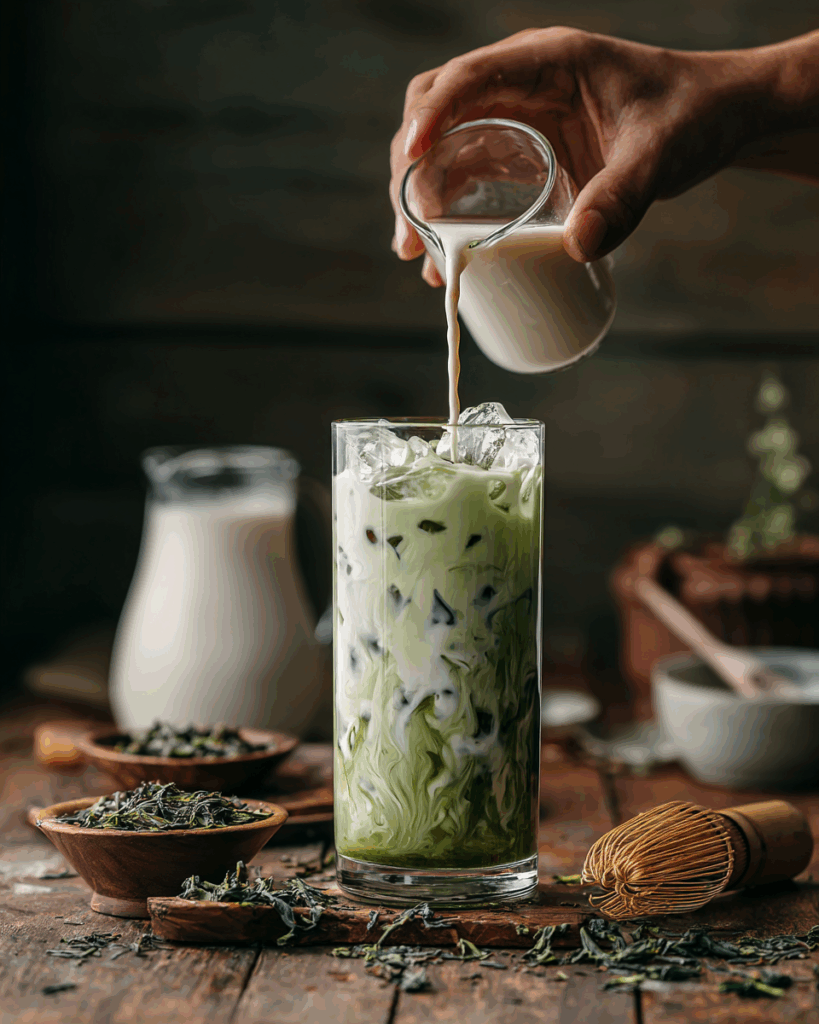
Before sipping, give it a gentle stir to meld the flavors together. The result is a beverage that’s as beautiful as it is delicious—creamy, earthy, slightly spiced, and perfectly sweetened.
Pro Tips for the Perfect Cup
- Use ceremonial-grade matcha for the brightest color and smoothest flavor.
- Adjust sweetness by adding more or less sweetened condensed milk based on your taste.
- For a dairy-free version, substitute coconut milk and use coconut condensed milk for a tropical twist.
- Serve immediately after layering for the best visual presentation.
Why This Recipe Works
This method respects the traditional Thai flavors while allowing room for personal adjustments. By controlling the ingredients and sweetness at home, you also make a healthier version compared to store-bought Thai green tea mixes.
Where to Find Thai Green Tea Near You
If making Thai green tea at home feels like too much effort or you simply crave the authentic taste crafted by skilled hands, there are plenty of places where you can enjoy it without lifting a whisk.
Thai Restaurants and Cafés
Across the United States, Thai restaurants have embraced the growing popularity of Thai green tea. It often appears alongside classics like Thai iced tea on drink menus. Served in tall glasses brimming with ice, its creamy green layers catch the eye even before the first sip. Some upscale Thai cafés even offer variations like Thai green tea latte or bubble tea versions, complete with chewy tapioca pearls.
If you live in or near a city with a large Asian community, you’re likely to find Thai cafés or dessert shops offering this drink as part of their regular menu. Ask your local Thai restaurant if they serve it, and don’t be surprised if the staff smile knowingly—this drink is as beloved in Thailand as it’s becoming overseas.
Asian Supermarkets and Specialty Stores
For those who prefer to bring a taste of Thailand home, Asian supermarkets are your best bet. Many stock Thai green tea mix packets from popular brands like ChaTraMue, which you can brew easily. These pre-packaged mixes are convenient but keep in mind they might contain food coloring or added flavorings that aren’t part of the traditional recipe.
Specialty stores focusing on Thai imports often carry higher-quality loose-leaf green tea blends. These allow you to craft a more authentic cup at home while skipping the additives.
Thai Green Tea Near Me: How to Search
If you’re not sure where to start, a quick online search using the phrase “Thai green tea near me” can reveal surprising local gems. Bubble tea shops, in particular, have caught onto the trend and now offer Thai green tea as a flavor option. Many even combine it with matcha for a fusion twist.
Mobile delivery apps also make it easier than ever to explore. Check platforms like Uber Eats or DoorDash to see which local Thai spots deliver.
Why Buying It Out Is Worth a Try
While homemade Thai green tea lets you adjust sweetness and ingredients, buying it out has its perks too. You’ll get to taste how Thai chefs balance the creaminess, sweetness, and earthy flavors perfectly. It’s also a great introduction for newcomers unsure about committing to the process of making it themselves.
Pro Tip for Ordering
When ordering from a café, ask if they use real matcha or a powdered mix. If you’re sensitive to sugar, request a less sweet version or inquire if they can make it dairy-free. Many modern Thai cafés are happy to accommodate dietary preferences.
Creative Variations of Thai Green Tea
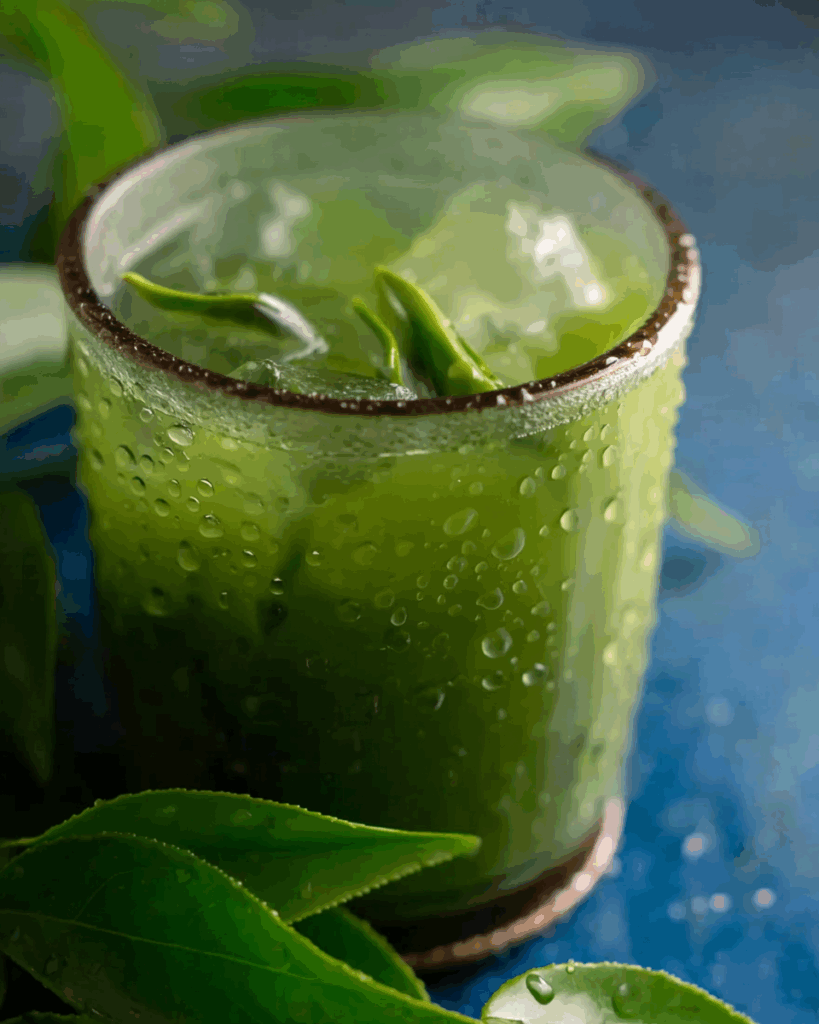
Thai green tea isn’t limited to the classic iced version you see in cafés. Its creamy, earthy profile and vibrant green hue make it the perfect base for inventive spins that cater to every craving. From cozy warm drinks to icy desserts, these variations showcase just how versatile this beloved beverage can be. Here’s a look at all the ways you can enjoy it beyond the traditional recipe.
Smoothie
If you love your drinks with a tropical twist, a smoothie is a must-try. Imagine the classic iced drink blended with ice, banana, and a splash of coconut milk to create a thick, creamy beverage. The matcha’s earthiness pairs beautifully with the natural sweetness of banana, while coconut milk adds richness without overwhelming the flavor.
This variation isn’t just delicious—it’s also perfect for hot summer days or as a light breakfast alternative. For an extra indulgence, top it with whipped cream and a dusting of matcha powder.
Latte
For those who prefer warm beverages, a latte offers comfort in a cup. Instead of serving it iced, heat the spiced milk base and whisk in matcha for a smooth, velvety drink. The aroma of star anise and cloves is more pronounced when served warm, creating a cozy experience perfect for cool evenings.
This version also allows for easy customization. Swap dairy milk with oat milk or almond milk for a vegan option, and adjust the sweetness to your liking. A sprinkle of cinnamon or nutmeg on top adds a fragrant finish.
Bubble Tea
The rising popularity of bubble tea around the world has brought this drink into the spotlight. By adding chewy tapioca pearls to your iced version, you transform it into a fun, textural drink that’s both satisfying and playful.
Bubble tea shops often offer this as a regular menu item, but you can also make it at home. Simply cook store-bought tapioca pearls, let them cool slightly, and drop them into your glass before pouring in the tea. The combination of creamy tea and chewy pearls is addictive.
Frappe
Think of this as the dessert cousin of the smoothie. A frappe blends the iced tea base with crushed ice and a touch of whipped cream for an ultra-refreshing treat. Drizzle with sweetened condensed milk or caramel sauce for extra decadence.
This is perfect for those who enjoy their drinks more like a dessert—rich, creamy, and ice-cold.
Ice Cre
Why stop at drinks? The distinct flavor of this beverage makes it an excellent ingredient for ice cream. Its earthy tones balance beautifully with cream and sugar, resulting in a frozen dessert that’s unique yet comforting.
Homemade or store-bought versions often showcase a vibrant green color and pair well with toppings like toasted coconut, crushed nuts, or even a drizzle of condensed milk.
Affogato
For an adult twist, pour a shot of hot matcha over a scoop of vanilla or coconut ice cream. This affogato melts the ice cream slightly, creating a luscious pool of sweet, earthy flavors. It’s an elegant dessert drink perfect for dinner parties or a quiet night in.
Why These Variations Work
Each variation respects the core of this drink—its creamy, spiced, and slightly sweet essence—while adding new layers of flavor or texture. Whether blended, frothed, frozen, or poured over ice cream, these adaptations allow you to enjoy it in multiple ways throughout the year.
For health-conscious drinkers, smoothies and lattes with non-dairy milk offer lighter options, while desserts like ice cream and frappes embrace full indulgence. This adaptability is what makes it a favorite for so many.
Pairing with Food
This isn’t just a standalone treat—it’s also an ideal companion for a variety of dishes. Its creamy texture, subtle sweetness, and earthy undertones make it versatile enough to complement both savory and sweet flavors. Whether you’re planning a Thai-inspired dinner or simply want a snack to enjoy with your tea, here’s how to pair it like a pro.
Best Thai Desserts to Serve
When it comes to dessert pairings, this drink shines alongside traditional Thai sweets. The richness of the tea balances the lighter, fruit-forward flavors commonly found in Thai desserts.
Mango Sticky Rice
The classic Thai dessert of sticky rice, ripe mango slices, and a drizzle of coconut cream pairs beautifully with the creamy beverage. The earthy matcha tones cut through the sweetness of the mango, while the tea mirrors the coconut richness. Together, they create a harmonious flavor experience.
Coconut Pancakes (Khanom Krok)
These small, crispy pancakes filled with coconut custard offer a light yet decadent treat. Paired with the spiced and creamy drink, it’s a combination that feels indulgent without being overwhelming.
Crispy Banana Fritters
The warm, caramelized crunch of banana fritters finds a perfect balance in the cool, creamy tea. The contrasting temperatures and textures enhance the eating experience, making each bite and sip feel like a celebration.
Why It Complements Spicy Thai Dishes
Thai cuisine is renowned for its bold, spicy flavors. From fiery curries to tangy salads, these dishes can leave your palate craving something cooling and soothing. That’s where Thai green tea excels. Its creamy sweetness acts as a natural counterbalance to spice, calming the heat while refreshing your taste buds.
Green Curry and Thai Green Tea
Pair a spicy green curry with Thai green tea for a meal that’s both exciting and comforting. The tea’s mellow sweetness helps tame the heat while allowing you to fully appreciate the complex flavors of the curry.
Som Tum (Papaya Salad)
This zesty, spicy salad made from shredded green papaya, chili, lime, and fish sauce is another excellent match. Sipping Thai green tea between bites provides relief from the fiery chili kick, making each forkful more enjoyable.
Pro Tip: Creating a Thai Tasting Menu
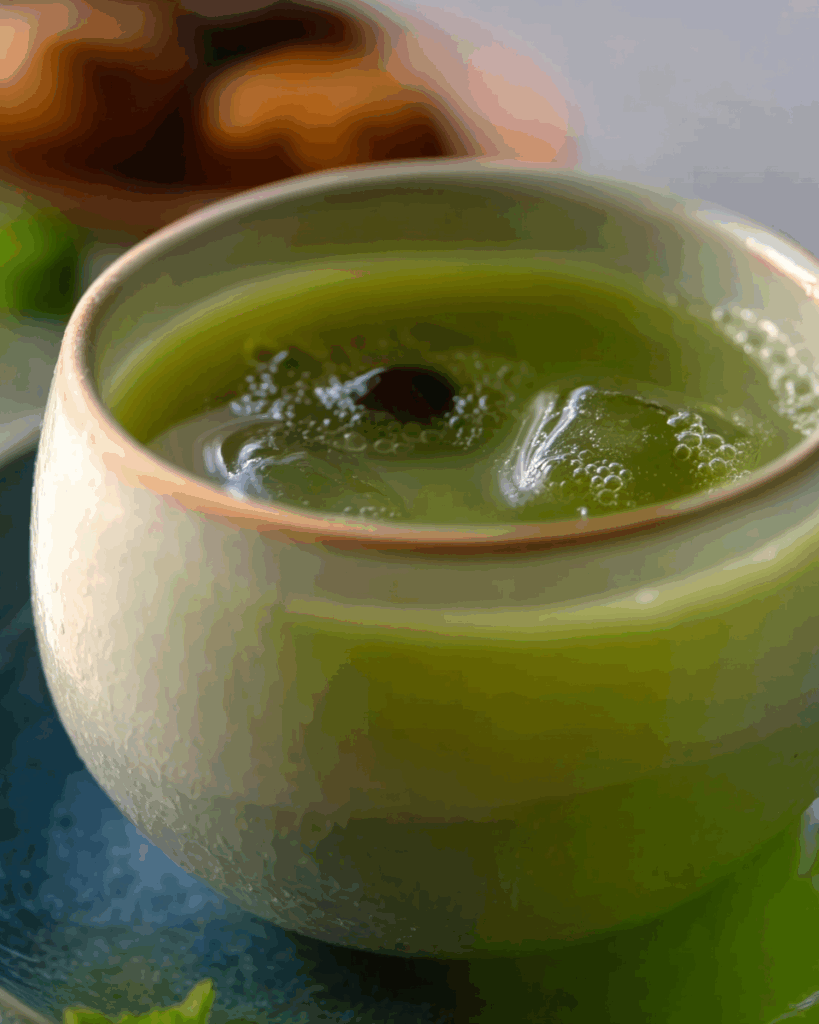
For a full Thai dining experience at home, consider serving Thai green tea alongside:
- Starter: Crispy spring rolls or chicken satay
- Main: Pad Thai or Panang curry
- Dessert: Mango sticky rice with an iced Thai green tea
The drink’s adaptability means it can flow effortlessly from appetizer to dessert, offering a cooling contrast or a creamy complement as needed.
Beyond Thai Cuisine: Global Pairings
Although deeply rooted in Thai culture, Thai green tea’s profile also pairs well with non-Thai dishes:
- Chocolate Desserts: The earthy matcha tones balance chocolate’s richness.
- Cheesecakes: Its creamy body complements the tangy sweetness of cheesecake.
- Savory Pastries: Think spinach puffs or quiches for a unique East-meets-West pairing.
Why Pairing Matters
Pairing Thai green tea with food isn’t just about flavor—it’s about creating moments. The interplay of textures, temperatures, and tastes elevates a simple meal into an experience. Every sip becomes more enjoyable when it enhances the dish it accompanies, and vice versa.
Conclusion
This drink is more than just a trendy beverage—it’s a fusion of culture, flavor, and comfort in a glass. From its aromatic spices to its earthy matcha tones and creamy finish, it offers a unique sensory experience that pairs beautifully with Thai dishes and desserts. Whether enjoyed iced on a summer afternoon or sipped warm as a cozy latte, it adapts effortlessly to your mood and season.
At Just Thai Recipes, our mission—as shared on our About page—is to bring Thailand’s bold flavors into your home kitchen. This drink captures that mission perfectly. It invites you to slow down, savor the moment, and explore the delightful nuances of Thai cuisine.
So why not try crafting it yourself? Start with the traditional recipe, then venture into creative variations like smoothies, frappes, or even ice cream. And next time you’re in a Thai restaurant or bubble tea shop, order one to experience firsthand why this delicious beverage is winning hearts worldwide.
FAQs About Thai Green Tea
Does Thai green tea contain caffeine?
Yes, Thai green tea does contain caffeine because it uses green tea leaves or matcha, both natural sources of caffeine. A typical serving has between 30–50 milligrams of caffeine per 8-ounce glass—less than coffee but more than many herbal teas. This moderate caffeine level makes it a perfect option for those seeking a gentle energy boost without the intense jitters of coffee.
Is green Thai tea healthy?
Green Thai tea can be considered healthy in moderation. Green tea and matcha are packed with antioxidants like catechins, which help fight free radicals, promote heart health, and aid metabolism. The drink also contains L-theanine, an amino acid that promotes relaxation without drowsiness. However, the added sweetened condensed milk increases sugar and calorie content. Making it at home allows you to adjust sweetness and choose healthier milk alternatives to keep it aligned with your dietary goals.
What’s the difference between Thai tea and Thai green tea?
The primary difference lies in the type of tea and color. Thai tea uses black tea leaves blended with spices and food coloring, giving it a bright orange color, whereas Thai green tea uses green tea leaves or matcha for a vibrant green shade. Flavor-wise, Thai tea is bolder with a slightly stronger tannin presence, while Thai green tea is earthier and lighter. Thai green tea also often has a fresher, grassy note from the matcha, which isn’t present in Thai tea.
What is Thai green tea made of?
Thai green tea is made using a combination of green tea leaves or matcha powder, black tea leaves, sweetened condensed milk, whole milk (or coconut milk for a dairy-free option), and aromatic spices like star anise and cloves. It’s often served over ice for a refreshing drink or enjoyed warm as a latte. The result is a creamy, lightly spiced beverage with a beautiful green hue and a balanced sweet-earthy flavor.

